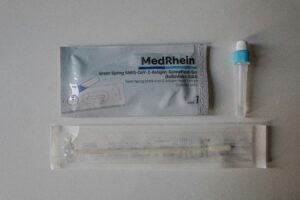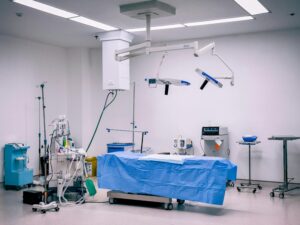Bringing a medical device from concept to market is a complex journey. Early pilot runs feel manageable because quality checks are easier to oversee and manage. However, when companies begin to scale medical manufacturing, every new process, supplier, or machine introduces additional complexity.
Scaling introduces regulatory and operational pressure. Market demand, investors, and competition often push companies to move faster. But speed without structure can introduce compliance risks. In the medical field, even small mistakes have serious consequences.
The solution lies in strategy. Expanding capacity while reinforcing regulatory systems allows companies to scale responsibly. When compliance is part of the growth plan, approvals come faster, risks decrease, and credibility grows. For OEMs, this balance is the foundation of sustainable success.
The challenge of scale medical manufacturing without compromising quality
Growing in the medical industry is exciting, but it also creates unique challenges. Early production may feel smooth because small runs are easier to control. As companies begin to scale medical manufacturing, risks multiply. More machines, more people, and more suppliers can increase the chance of errors.
The central concern is always quality. Patients and healthcare providers depend on devices that work flawlessly every day. If compliance slips, even slightly, the entire business is at risk. Compliance scalability is not a nice-to-have; it is the foundation that protects lives and reputations.
The temptation for many manufacturers is to focus only on speed. New market opportunities or urgent customer demand may encourage shortcuts. However, moving fast without structure often leads to costly recalls or regulatory delays. Growth without compliance is not real growth.
The best strategy is balance. Building capacity while reinforcing systems helps maintain stable quality. Companies that design with compliance in mind scale faster in the long run. Strong foundations reduce stress, save money, and build trust with both regulators and clients.
From concept to commercialization: Validation at every stage
Medical production is never just about making parts. It is about continually proving that every product is safe. Validation ensures this proof is reliable. Installation Qualification (IQ), Operational Qualification (OQ), and Performance Qualification (PQ) are not one-time steps. They must evolve as companies move from prototype to market.
When equipment changes or new automation is introduced, the process must be reviewed. Regulators expect every adjustment to be documented and tested. Failing to perform these checks puts both patients and businesses at risk. A failure during large-scale production can have devastating effects.
This is why OEM process continuity is critical. Each stage of growth requires validation that is tailored to its scale. What worked in a lab might not hold up in mass production. Processes must be revisited, refined, and revalidated to ensure accuracy and effectiveness. Companies that treat validation as a continuous cycle avoid surprises.
Beyond safety, validation brings efficiency. It uncovers weak points before they become expensive problems. It also reassures investors, partners, and healthcare providers that the product is based on a solid foundation. With strong validation, scaling becomes less about risk and more about opportunity.
Why documentation must scale with your product
Documentation is the silent backbone of compliance. In early phases, records may be manageable and straightforward. However, as production increases, paperwork multiplies rapidly. To scale medical manufacturing effectively, documentation must grow in tandem with output.
Regulators do not only want to see that a product is safe. They want proof that every step has been tracked. Missing batch records, incomplete deviation reports, or disorganized data can block approvals. Worse, they can trigger product recalls that damage reputations.
This is where structured systems make the difference. An ISO-validated partner ensures that every piece of documentation adheres to international standards. This reduces risks during audits and builds confidence with stakeholders. Accessible and consistent records are as vital as the product itself.
Well-managed documentation also creates long-term value. Companies can analyze past data to improve future processes. They can detect patterns, optimize workflows, and even predict problems before they arise. In this way, compliance is not just about meeting rules; it becomes a tool for innovation.
Supplier coordination and quality checks at scale
Scaling does not happen in isolation. Every OEM depends on a network of suppliers, service providers, and distribution partners. If one link in the chain weakens, the entire process suffers. For this reason, compliance scalability must extend beyond the factory walls.
At small volumes, it is possible to monitor suppliers casually. But once orders increase, risks rise sharply. A late shipment or minor inconsistency can disrupt production schedules. Worse still, a quality issue upstream can lead to non-compliance downstream. For medical products, that is unacceptable.
The solution is proactive management. Regular supplier audits, clear quality agreements, and open communication keep everyone aligned. Companies that set high expectations and monitor performance avoid costly surprises. These checks protect both the manufacturer and the end user.
Scalable quality control means building systems that can handle growth. More suppliers require more coordination. More volume requires stricter oversight. When OEMs embed quality at every level of the supply chain, they can grow with confidence and minimize regulatory risk.
RexMed’s scalable model for regulated medical manufacturing
Since 1990, RexMed Health has supported OEMs in navigating the complex journey from early development to large-scale production. The company understands what it takes to scale medical manufacturing while protecting compliance. Its infrastructure is built specifically for regulated industries.
RexMed’s approach covers every stage of growth. From prototype to market, the team ensures that validation, documentation, and supplier coordination are never overlooked. Clients gain the advantage of OEM process continuity supported by systems that meet global regulatory standards.
The company’s facilities are ISO-validated, offering assurance that every process follows proven methods. This reduces audit risks, simplifies documentation, and builds trust with regulators. For OEMs, it means more time focused on innovation and less time managing paperwork.
For OEMs, the result is compliance that scales as smoothly as production. To better understand the regulatory environment that shapes this process, refer to the U.S. Food and Drug Administration’s Medical Devices section.






